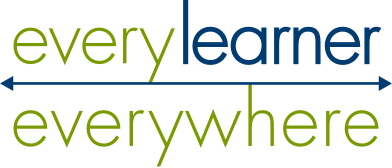Imagine a college student whose progress is undermined by an urge to leave — to leave a class meeting, a course, or a program. Everything about their participation or work says “I’m outta here.”
“That’s very much tied to a lack of belonging,” Dr. Aris Winger, Associate Professor of Mathematics at Georgia Gwinnett College and Executive Director of the National Association of Mathematics, said at the start of Fostering a Sense of Belonging and Instructional Transparency, a recent webinar discussing how to implement evidence-based teaching practices with digital tools.
“I’m imagining walking into the classroom and saying, ‘Is there someone in here I can connect to?’ Just having that increases the belonging piece a ton.”
This observation emerged while Winger and his co-presenter, Dr. Abbe Herzig, Mathematics Faculty at Sarah Lawrence College, fielded comments from the webinar participants using Padlet as an online discussion tool. The exercise, naturally, was a way of practicing what Winger and Herzig were about to preach — practical, manageable, and effective ways to use digital tools to build a sense of belonging and instructional transparency.
Belonging and transparency are two of the eight digitally enabled, evidence-based teaching practices (DE-EBTs) featured on Transform Learning, a new resource hub that outlines the research around and dimensions of each practice and lets users submit their own activities, large and small, to an instructional examples library.
Winger and Herzig, as co-leads of the COME-IN project (Creating Opportunities in Mathematics Through Equity and Inclusion), were invited to share their expertise with these two DE-EBTs. (The webinar was part of a planned series of four that will cover all eight DE-EBTs.)
As the moderator, Dr. Christine Latulippe, said, two of the principles of Transform Learning is that instructors can start anywhere and can take small steps with digitally enabled, evidence-based teaching practices. The DE-EBTs aren’t sequential, and they don’t require comprehensive course redesigns before an instructor can try something new.
Instructional transparency in practice
“Transparency is one of the easiest ways you get to show your students you care,” Winger said, and Herzig explained that transparency depends on an “an explicit definition of what it means to succeed and how you will know if you are succeeding.”
It’s about making sure students have the opportunity to know what they need to learn and how the course will work. Students sense a course is transparent when instructional choices are intentional, not arbitrary. Assignments, both in and out of class, will have clearly stated learning goals. Helping students understand why they’re doing what they’re doing creates a more engaging learning experience and demonstrates respect for students’ time.
Clarity on expectations and goals might involve offering clear rubrics when available, explicitly communicating grading criteria, and being honest with yourself, and your students, about which deadlines are flexible and which are firm.
While digital tools enhance learning, instructors still must take steps to ensure expectations are clear and assignments are accessible to students. Instructional transparency is obscured if there is too much friction getting into and navigating around a tool or understanding the activity designed within it.
For this reason, Winger and Herzig recommended creating low-stakes activities to teach students digital tools and to build greater confidence, resulting in better outcomes for more critical assignments later on.
Research has also shown that a student’s ability to seamlessly contact the instructor through digital learning tools has an impact on their perceptions of the instructor’s competence and their level of care toward students.
For instructors looking to reflect on ways to increase their own instructional transparency, Herzig and Winger recommended starting by picking an assignment or activity, examining the reason students are being asked to complete it, and whether it aligns with a learning goal or course expectation.
Building belonging to better student outcomes
Research shows at all levels of math that students who have a sense of belonging in their classroom are more likely to succeed. For Herzig and Winger, belonging means the ability for students to achieve success while being their true selves.
One meaningful way instructors can foster a sense of belonging is by learning to correctly spell and pronounce students’ names. By respecting pronunciation and spelling, students feel a greater sense of appreciation, safety, and equality in the classroom. In addition, instructors can promote a more inclusive classroom by varying the identities used in examples given in a course to reflect a diverse student body.
Highlighting unconventional solution strategies and investigating them creates a dynamic and inviting classroom that provides students and faculty new ways of approaching content they might not have otherwise considered. For the person who posed the alternative solution, it also conveys a sense of value and appreciation.
In addition to fielding alternative solutions, Winger and Herzig said contextualizing and celebrating errors as learning opportunities creates a safer environment for students to try new things.
As the leader of the classroom, instructors create a stronger sense of belonging by modeling and enforcing respectful communication to facilitate inclusive discourse. One example Herzig gave is for students to paraphrase points made by their peers during a discussion to exhibit active listening. Instructors can further the practice of respectful communication by acknowledging or thanking students when they raise questions, a practice Winger uses to both affirm and invite more discussion.
“Caring is not only about being a nice person,” Herzig said, “It’s critical to student engagement and their progress for them to understand you care about their success, their experience in the classroom, and that you see them.”
Explore digitally enabled evidence-based teaching practices on Transform Learning

